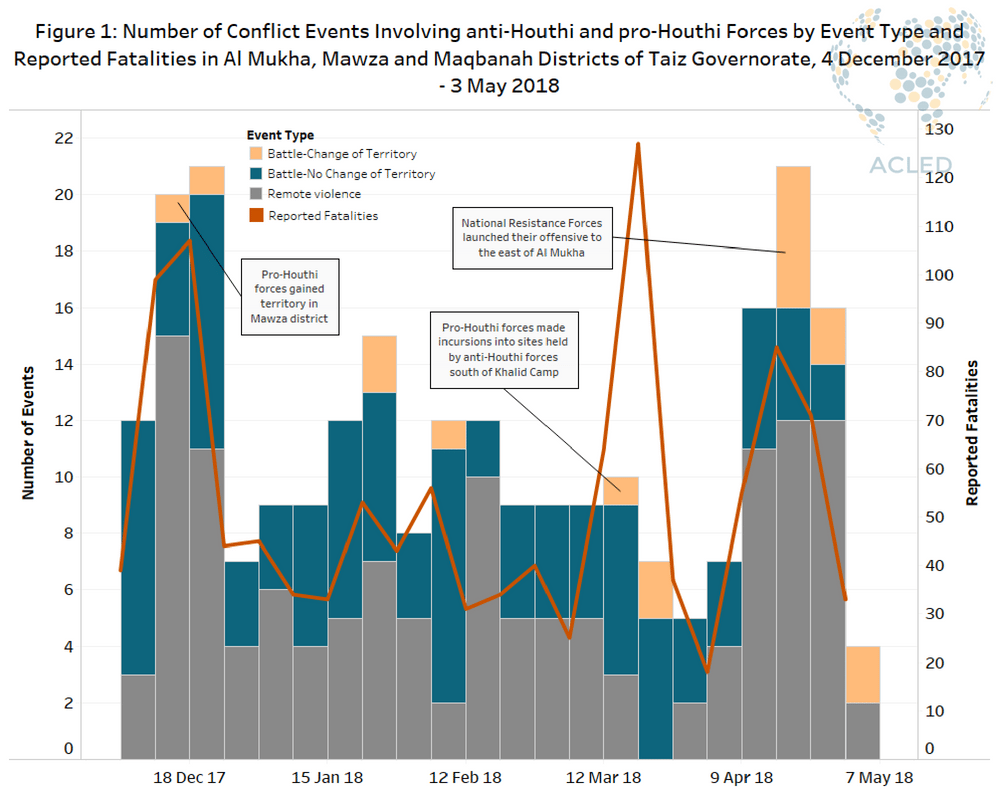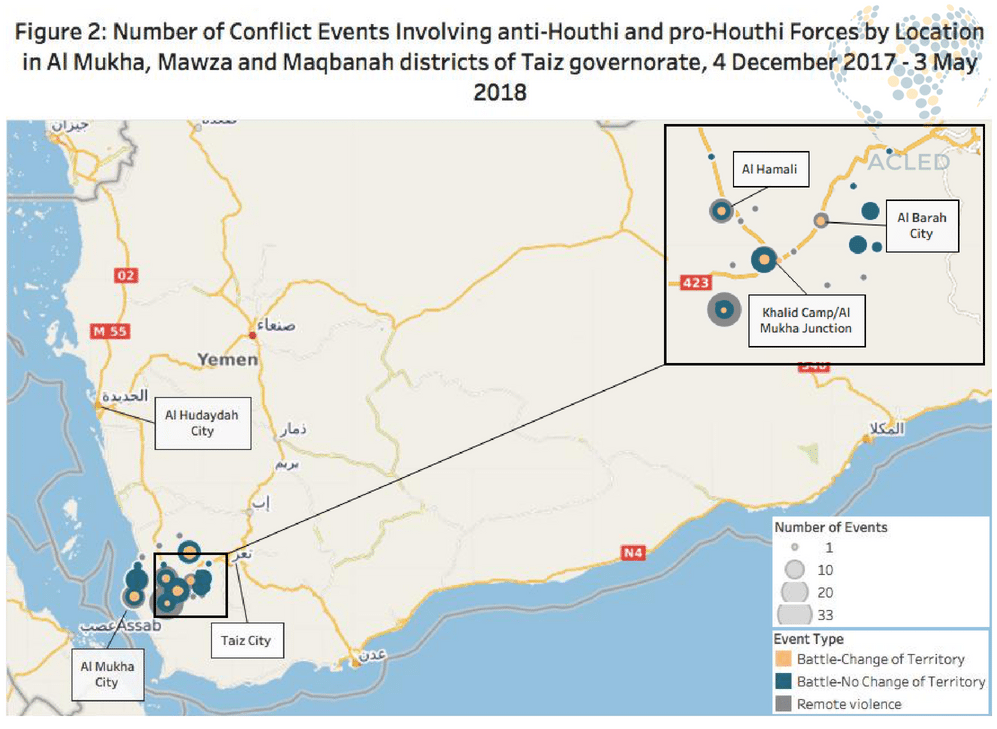Going by the name of the National Resistance Forces (NRF), a number of fighters loyal to former president Ali Abdullah Saleh have recently made substantive territorial gains against their former allies in western Yemen. Following the collapse of the Houthi-Saleh alliance that led to the battle of Sana’a in December 2017 (ACLED, 16 February 2018), the Saudi-led coalition has tried to avoid the fragmentation of the forces loyal to late president Saleh, which were left leaderless, in order to harness them in the fight against the Houhtis. The coalition leadership saw in Brigadier General Tareq Mohammed Saleh, nephew of the former president and a former commander of the Presidential Guard, a recognised military figure that could take on this task. First believed to have been killed alongside his uncle on 4 December 2017, Tareq Saleh resurfaced in the south of the country in early 2018, where he was reported to be living under the protection of the Saudi-led coalition (Middle East Eye, 23 January 2018).
With support from the United Arab Emirates (UAE), Tareq Saleh recruited between 3,000-10,000 elite fighters from the Republican Guard and the Central Security Forces, and formed the National Resistance Forces (Motabaat, 21 April 2018; Critical Threats, 24 April 2018). In early April 2018, the NRF arrived at the western coast front of the Yemeni civil war, where they established themselves in the port city of Al Mukha. On April 19, they launched an offensive to the east of the city, backed by UAE forces, the Southern Resistance and the Tihama Resistance. Following the offensive, the NRF have been present in the contiguous districts of Al Mukha, Mawza and Maqbanah, as they aim to secure the areas around Khalid military camp and to retake Al Barah city from pro-Houthi forces.
As shown in Figure 1, the offensive has led to the largest capture of territory by anti-Houthi forces in the districts in a single week since the death of former president Saleh on 4 December 2017[1].
Figure 2 shows that most of the fighting has occurred at the strategic intersection of interior roads that link the cities of Al Mukha, Taiz and Al Hudaydah. Fighting has been concentrated around Khalid military camp, which is adjacent to Al Mukha junction, and north of the camp in Al Hamali area. On May 8, reports emerged that the NRF took control of Al Mukha junction (Twitter, 8 May 2018). This major gain would pave the way for further incursions toward the Houhti-controlled city of Al Barah, which has recently been the target of Saudi-led coalition airstrikes, before the besieged city of Taiz. The control of Al Mukha junction could also open access to an inland road that goes north toward the port city of Al Hudaydah – a controversial target of the Saudi-led coalition since at least April 2017 (Reuters, 5 April 2017) – providing an alternative to moving along the coast, which has so far proven arduous.
However, the arrival of Tareq Saleh’s National Resistance Forces on the western front highlights tensions within the anti-Houthi coalition. On April 15, three days after the NRF arrived in Al Mukha, fatal clashes were reported with Southern Resistance fighters, sparked by the tearing down of a Republican flag by the latter. In Taiz city, where demonstrations took place to denounce the Saudi-led coalition’s alignment with Tareq Saleh, there were reports that the UAE traded its support from its long-time ally the Abu al Abbas Salafi militia for the help of Al Islah, previously considered as an archenemy, in containing popular resentments against the NRF (Al Murasil, 25 April 2018). Looking ahead, the fluidity and fragility of alliances formed by the Saudi-led coalition could send mixed signals to local armed groups.
Find an explanation of ACLED’s methodology for monitoring the conflict in Yemen here.
[1] All territorial gains in this graph represent anti-Houthi gains except when specified otherwise.







